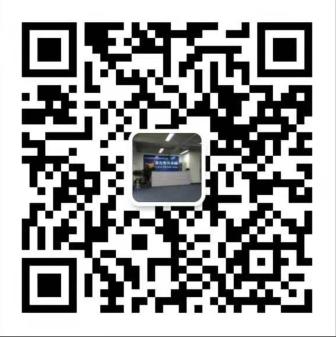1. 专升本大学英语词汇要求
领会式掌握4000个左右的单词,以及由这些词构成的常用词组(包括中学所掌握的词和词组),并且有按照基本构词法识别生词的能力。
2. 大学英语对升本语法结构要求
巩固和加深基本语法知识,提高在语篇水平上运用语法知识的能力。
●考核学生对语法结构和词语用法的掌握程度。
●重视词汇和语法的学习。不能只求记住多少单词、词组的意义和语法规则, 要做到灵活运用。
B. 考查重点
1. 词汇考查重点
1. 动词、名词与介词的搭配如:popular (patient)+with;yield/solution/adapt/transfer/access+to;accuse/require+of;charge+for;under+discussion等等。
习惯用法如:confess to/set about/be used to+doing;be supposed to/have (make) sb.+do等。
2. 由同一动词构成的短语如:come,go,set,break等构成的短语。
3. 单个的动词、抽象名词、形容词和副词多以近义词、同义词的形式出现。
4. 介词短语在句中作状语如:in terms of;with the exception of;in vain等,另外还应注意rather than,other than,such as,none/nothing+but等词在考题中出现。
2. 语法结构考查重点
1.基本语法知识:词类,非谓语动词,名词从句,形容词从句,副词从句,独立主格,一致,倒装,强调等。
2.语法结构重点为内容庞杂较难掌握的项目,如:虚拟语气,状语从句,定语从句,独立主格,情态动词。
1)虚拟语气的考点
① would rather+that从句+ ;
② It is vital/necessary/important/urgent/imperative/desirable/advisable/natural/essential+that+ ;
③ It is time/about time/high time+that+ ; proposal/suggestion+that+ ;
④ lest+that+should+ ;
⑤ if only+that+would+ 。
2)状语从句的考点
① 非if引导的条件状语从句,此类句子多用at times,provided,so long as,in case,once等来替代if;
② 由even if/so,now that,for all等引导的让步状语从句;
③ just/hardly…when引导的时间状语从句;
④ more than,as…as,not so much as,the same as,as much as等引导的比较状语从句。
3)独立主格结构
4)情态动词与完成时形式连用。
5)定语从句重点考查介词+关系代词(which)和as作为关系代词。
C. 语法结构考试三大难点
1. 独立主格结构
独立分词结构:逻辑主语
1)She being my friend, I should have helped her. ( 人称代词逻辑主语用主格,逻辑主语与分词形成主谓关系用现在分词)
2)More time given, we should have done it much better. (逻辑主语与分词形成动宾关系(被动)用过去分词)
3)The students having done all the exercises, the teacher went on to explain the text.(强调分词发生的时间在主语动词的时间之前用现在分词的完成时)
4)Her money (having been )stolen, she couldn’t buy a plane ticket for her home. (同上,此句中being / having been常可省略)
5)There being no bus, we had to go back home on foot.( there being +逻辑主语是独立分词结构的一种特殊形式,表示存在,相当于一个状语)
2. 情态动词与完成时连用
1) should +have+过去分词
表示过去“本应该……而实际未做”,暗示说话人对自己的责备、抱怨或遗憾的意思。否定结构为shouldn’t +have+过去分词,表示过去“本不应该……”而实际上做了的动作。
How I regretted the days when I had played and should have studied.
You shouldn’t have told anyone about it.
2) must + have + 过去分词
表示对过去情况的推测,意为“一定, 想必,可能”。表示对过去情况的否定推测用“can’t (couldn’t) + have + 过去分词”,不用“mustn’t + have + 过去分词”,反意疑问句用have (has)。有明确表示过去时间的状语(before 除外)时反意疑问句用did。
Since the ditch is full of water, it must have rained last night.
Joe can’t have left. I saw him just now.
The party couldn’t have been successful as you had hoped.
He must have finished his homework, hasn’t he?
He must have attended the meeting yesterday evening, didn’t he?
3) may (might) + have + 过去分词
表示对过去情况的推测。用might + have + 过去分词可以用于肯定句、否定句,但不用于疑问句。
In return I may have been able to teach you a little about medical technique.
Might he have been caught and killed? 错误
4) can (could) + have+过去分词
表示对过去情况的推测。用于疑问句和否定句,不用于肯定句。
They can’t have lost themselves in the woods, because I drew a map to them.
Bill couldn’t have gone home this weekend. I saw him at the school ground this morning.
5) need + have +过去分词
表示过去“没有必要做”,有责备的意思。否定形式表示 “做了本不应该……”的事。
Need you have watched TV last night?
You needn’t have woken me up so early. It’s Sunday today.
6) would + have + 过去分词
表示“本应该……,而未……”,would like to have + 过去分词表示“过去希望做……但未……”。
We would have argued with you.
I would like to have seen the film.
3. 关系代词as和which的区别
1)当非限制性定语从句放到主句的前面时,引导词只能用as,而不用which。
As is planned, we got there before eight.
2)As引导的非限制性定语从句指表示积极的意义,与主句是顺理成章,不能与之矛盾。若非限制性定语从句表示消极的意义,只用which。
He has succeeded in his career, as / which we all hope.
Her grandma died last week, which made her very sad.
3)当关系代词代替主句中的宾语从句或复合结构(如:宾+补;不定式短语;动词-ing形式短语等) 时,一般只能用which, 而不用 as。
She told us that there was something wrong with her bike, which was true.
He asked her to help him with his English, which she did.
4) as 在非限制性定语从句中,还常跟such连用。
There was a look of love in the teacher’s eyes, such as mothers have for their children.
4. as常用于一些固定结构中。
as is well known / as we all know 众所周知 as is said above 正如上面所说
as might be imagined 正如所想象的那样 as is reported 如报道所说
as has been pointed 如所指出的那样 as is expected 正如所料




为保障账号安全,请设置登录密码